Pentax K-r Review
Pentax K-r
This mid-range DSLR has a few idiosyncrasies but packs in some useful features too, making it a great choice to stills photographers.
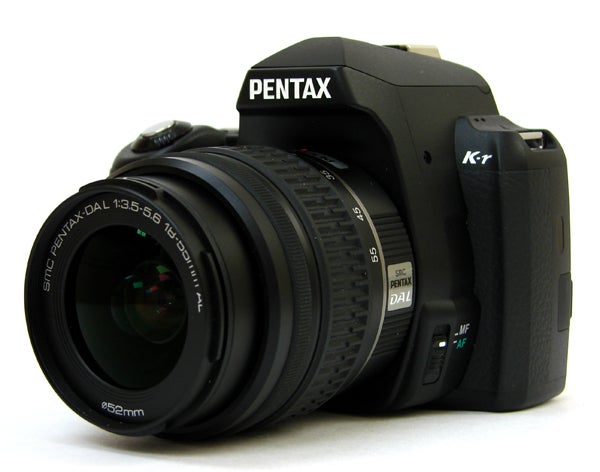
Verdict
Pros
- High 6fps shooting speed
- High resolution 921k-dot monitor
- Uses either custom battery or AAs
- In-body image stabilisation
- Superb image quality
Cons
- Lower resolution sensor than competition
- Only HD Ready video recording
- No external mic input for video
- No HDMI out for playing video
Key Specifications
- 12.4 megapixel CMOS sensor
- 3in 921k-dot 3in LCD screen
- 6fps shooting speed
- HD Ready video recording
- In-body image stabilisation
Pentax has consistently produced well performing, decent value digital SLRs since the introduction of the *istD, coming up to a decade ago now. Yet it’s a brand that’s easy to overlook in the face of the big electronics manufacturers’ (Sony, Panasonic) marketing firepower and the traditional big two of Canon and Nikon. Can the Pentax K-r convince anyone upgrading from a compact or bridge camera to put their faith and cash where it counts?
To set the K-r in context, it sits below both the semi pro 14.6 megapixel K-7 and the newer K-5 which tops the range on resolution at 16.3 megapixels, but above the entry level K-x, which like the K-r has a 12.4 megapixel resolution APS-C sensor. For action shooters, the K-r is second only to the K-5 in terms of continuous shooting speed, even nudging ahead of the K-7 with up to 6fps achievable to the K-5’s 7fps, though of course overall resolution is lower.
The K-r therefore comes as a bit of a ‘best of’, as regards the Pentax range. Yes, it has a resolution typical of a beginner’s DSLR, but the firepower and flexibility to avoid those more familiar with working their way around such a camera getting easily bored. It’s basically like the K-x and K-7 have been merged into the one unit.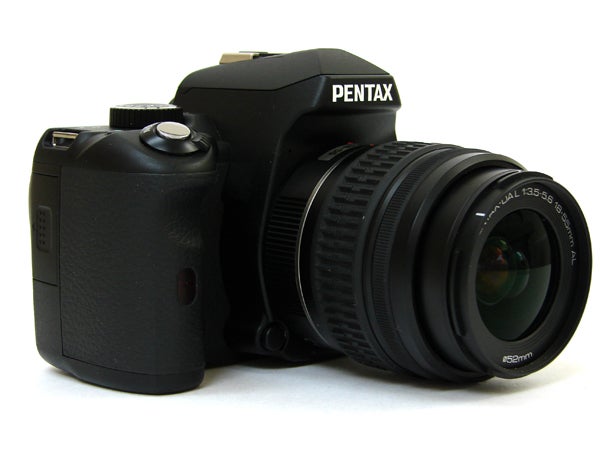
In terms of price, at around £500 with the standard f/3.5-5.6 18-55mm kit lens, it most obviously comes into competition with the Nikon D3100, and for a spot more you’ll get the Canon EOS 550D. Both of these are excellent cameras, so it’s got a hard task on its hands to convince newcomers not to side with the bigger brand names. A few things do help it get a head start, though.
One of these is that Pentax has provided space in the base of its hand grip for either the supplied rechargeable lithium ion battery or the alternative of four AAs, should you run out of juice miles away from mains power. This versatility makes it that little bit more suitable as the big family camera to take on holiday and such like. You also get in-body sensor-shift image stabilisation, saving you having to buy more expensive anti-shake lenses. 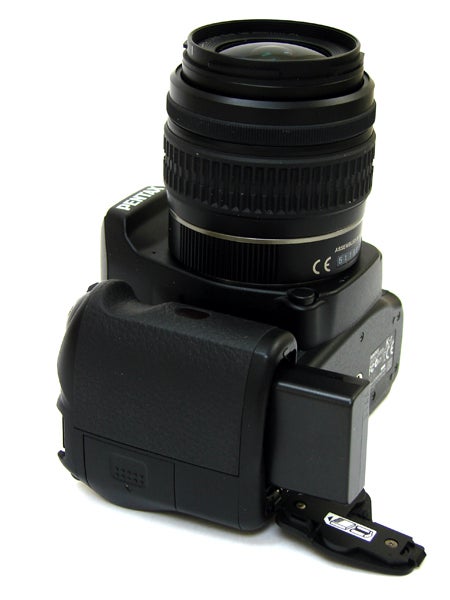
More expectedly, you also get HD Ready video shooting, which of course also suggests the presence of a Live View mode for framing your shots using the screen, rather than the viewfinder.
The K-r boasts rock solid build quality even if the large and obvious buttons and controls make it look a little less sophisticated on the outside than it actually is on the inside. It’s reasonably compact and lightweight for its class, with official dimensions of 97x125x68mm and a portable body weight of 544g, though the D3100 does trump it at only 455g. Most importantly, though, even with our test lens attached we avoided the all-too-familiar aching shoulders after lugging it around all day.
Blocky in design yet approachable in terms of control layout, the K-r offers surprisingly similar handling and proportions to its more senior K-7 sibling. That means great ergonomics, large buttons and easy to find and use features, of which there are plenty. There are some notable differences of course. Chiefly the K-r’s hand grip is less contoured and less comfortable than its big brother, plus it omits the K-7’s top-mounted LCD display window – a signature of semi pro DSLRs – so doesn’t afford this useful shortcut to key settings.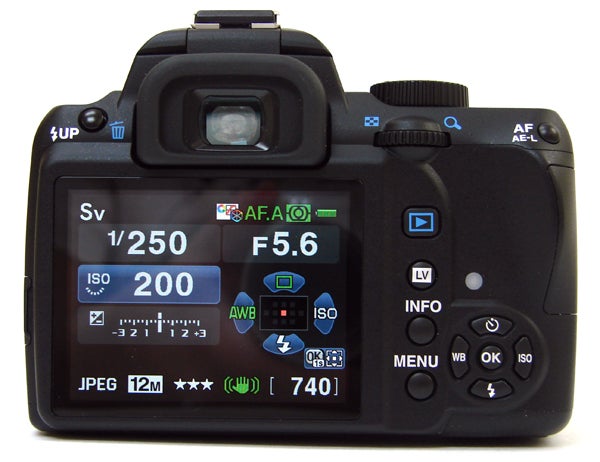
Instead of the K-7’s LCD window, to right the K-r has a chunky, almost oversized, shooting mode dial in its place. Its size has enabled Pentax to squeeze 14 settings around it without the control looking overly busy. Here we get the default point-and-shoot Auto Picture setting, the most prominent of the lot, along with the usual suspects of dedicated video and scene modes settings, the creative program, shutter priority, aperture priority, and manual shooting modes, plus further pre-optimised settings for the shooting of portraits, landscapes, close ups, sports (with 6fps shooting offered for up to 25 JPEGs) and night portraits. There’s even a mode for cancelling the flash, which is here of the pop-up variety with a hotshoe sitting just behind, for adding a more powerful option.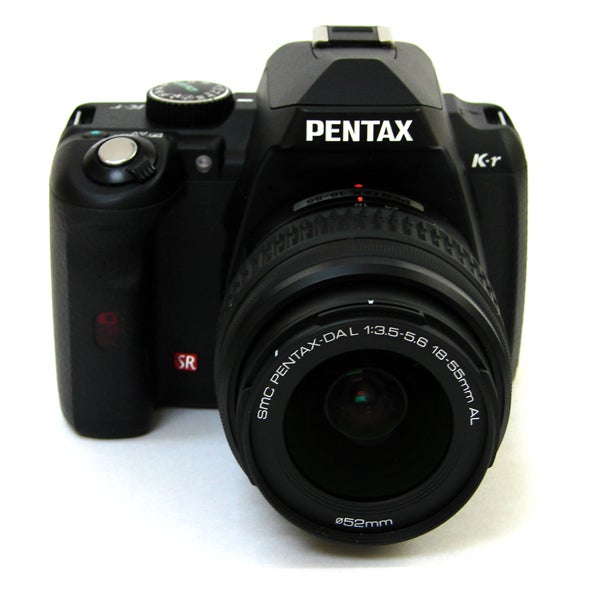
The shutter release button is of the ergonomically slanted variety, which we found made for greater comfort over prolonged periods of use. It’s located on a gentle forward slope at the top of the hand grip where it’s surrounded by the on/off switch. We find this location for the power switch more convenient than on Canon’s SLR’s, for instance, where it’s around the mode dial, though there is a greater chance that you may knock it while shooting.
Gripping the camera with the right palm, the thumb automatically falls on the K-r’s one command dial located on the back plate at the exact same location as the one found on the K-7. Conversely we find these thumb operated dials less easy to use than top mounted dials for operation with your forefinger, but there is a large degree of personal preference here. Give this a spin in playback mode to enlarge a portion of an image and check focus/exposure, or alternatively display your shots as a series of thumbnails. There is no second command dial as on the K-7, but this is to be expected for a non-semi-pro model. More troubling, though, are some other omissions. 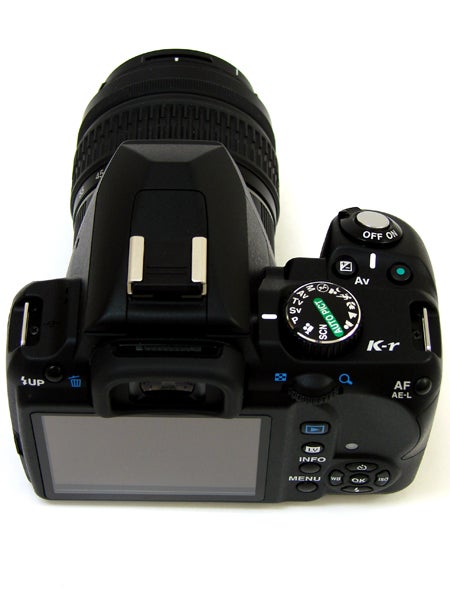
Whilst not a deal breaker there’s no dedicated one touch video record button on the K-r for its 1,280×720 pixel High Definition clips at a modest 25fps. Instead the dial needs to first be turned to the movie camera setting, and then, with a half press of the shutter release the camera automatically flips the mirror mechanism to go into Live View mode, the impressively high 921k-dot resolution 3in LCD screen bursting into life with the relayed image cropped top and bottom to resemble what the clip will look like when re-watched on your flat panel TV. Except here we come to the next omission, which is even more surprising: there’s no HDMI output; just the standard AV out and USB 2.0 connectivity. This is pretty much a standard DSLR feature these days, even at the entry level, so it really should be here and not just reserved for models higher up the range. What’s more, there’s no external microphone input.
This is of course, countered by the aforementioned in-body image-stabilisation and that unique battery system. The stabilisation system does seem to be very effective.
Further aiding performance in low light is the ability to expand the K-r’s light sensitivity range to ISO100 at the low end and a whopping ISO25600 equivalent at the high end. Not an ability you’d formerly have expected to find on a £500 DSLR, being usually reserved for semi pro models.
Flick the K-r’s on/off switch with the forefinger and the camera matches our recent test of the Nikon D3100 in that to all intents and purposes it’s possible to be up and shooting as soon as the finger can slide over on to the shutter release button at its centre. In other words it’s fast.
Utilising manual focus on the K-r is also quick and straightforward. Simply flick the focus switch tucked behind the lens mount to the right setting and, if like us you’re shooting fine detail, activate the camera’s Live View mode, which has its own almost instant access ‘LV’ button to display a larger view on the backplate monitor. There’s a second or so to wait whilst the mechanism mirror audibly flips out of the way. 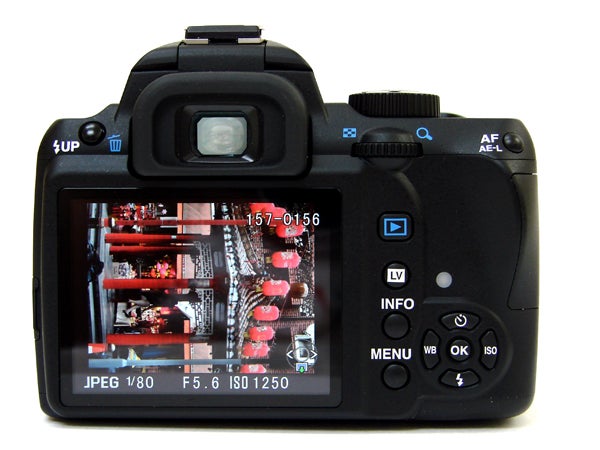
Alternatively, the camera is quick also to respond in auto focus mode. In fact, utilising 11-point AF, with a half press of the shutter release button it’s lightning quick to determine a target for you, the motor of our test lens whirring impressively as it does so. Also quite loud and definitive is the sound of the shutter firing, so the K-r might not be the best tool for surreptitious candid portraits. Shooting from a metre or so away, we managed to wake up the dog in our test shots for example.
A highest quality JPEG will write to either SD or SDHC card in around a second, which is rather impressive, with an uncompressed Raw file only extending this to two seconds.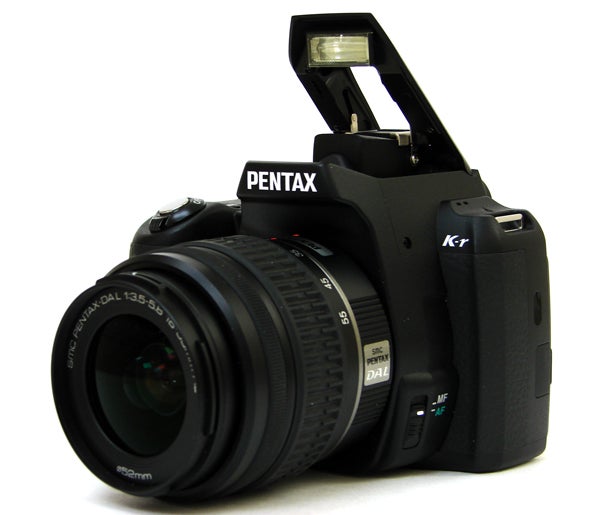
Incidentally, should you have the camera in Live View mode when also in AF mode, a half press of the shutter release prompts the camera, apropos of nothing, to zoom in on a central point in your image to show it’s focused properly and then jump back to show the full frame. As this slows things down momentarily and the lens adjusting is again a little noisy, it’s a little irritating that there doesn’t appear to be a way to deactivate it.
Also, we could have done with the screen at the back being angle adjustable to further aid shooting from unusual or otherwise awkward angles. It’s certainly not an expected feature at this price but it would have been another box on our buying check list ticked. However, all is forgiven and forgotten when you see the quality of the results, which we’ll come on to.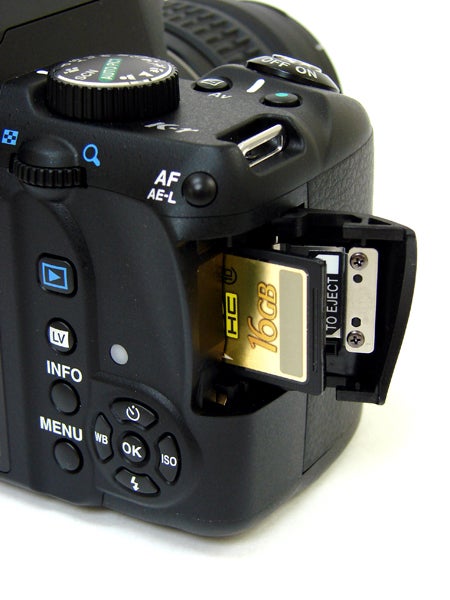
In our opinion Live View comes into its own and is at its most essential when shooting video clips. But even this, as we’ve noted already, isn’t quite as smooth and as instant a process as shooting with a mirror-less compact system camera such as an Olympus Pen or Sony NEX, or even Sony’s translucent mirrored A33 or A55 Alpha ‘SLT’ (as opposed to SLR) models. Essentially, as ever with video on an SLR, the quality is excellent but the ease of use is not so much. With the limitation to only 25fps, this particular model is also a step below the competition.
For anyone stepping up from a compact snapshot, there’s the ability to leave the Pentax K-r set to Auto Picture mode or any of the other subject-specific, pre-optimised shooting modes and simply fire off a shot with the secure feeling that comes from a DSLR with a reliable and consistent output. 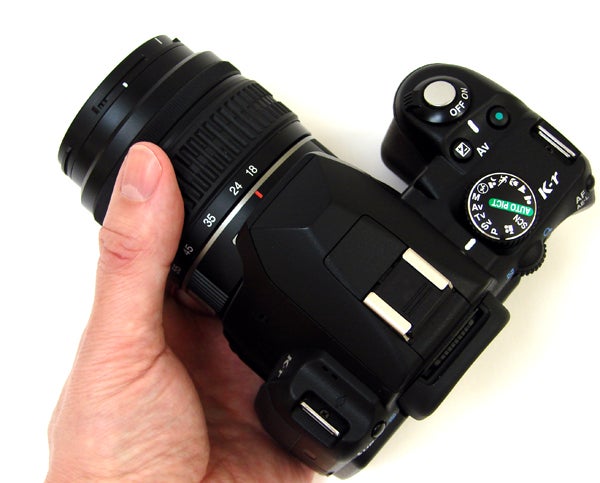
To rate its picture quality, what really stood out for us was the slightly warm, well saturated colours and even exposures achievable straight from the camera’s default settings – which again should appeal to the mass market, family user. Should you want to add visual punch though on dull days, there’s the opportunity to do this via the usual smattering of digital effects filters – here the likes of ‘toy camera’ are accessible in playback mode – and custom image modes, with the Reversal Film option really standing out for us in terms of delivering a bit more punch and contrast to formerly flat images. Pretty standard fare perhaps at this level, but they extend the K-r’s creative options for those who occasionally want to do more than point and shoot.
”’Verdict”’
The Pentax K-r sits in an odd position. It’s a step up model from a totally entry level DSLR with its high-resolution screen, 11 focus points, and fast performance, but yet it lacks Full HD video (only HD Ready) and has a lower-resolution sensor than some other mid-range models. It also has some other idiosyncrasies. While it does have in-body image stabilisation and the ability to use AAs in place of its standard battery, it doesn’t have an external mic input for video or HDMI output. The result is a camera that’s a very versatile choice at its price point for just pure still image shooting, and would actually be our choice on that point alone, but that’s not an allrounder when it comes to video.
If you want full HD video and a higher resolution sensor, the D3100 is the other obvious alternative, or if you spend around £100 more, you’ll get the Canon 550D, which is excellent for video and has an even higher resolution sensor.
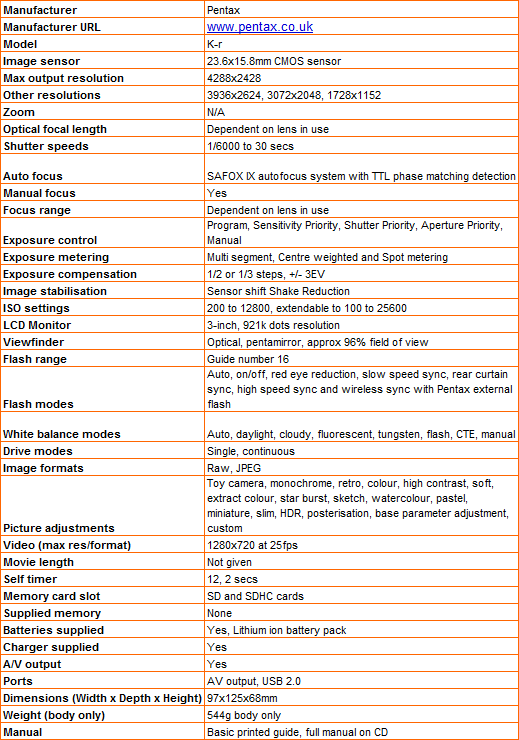
”’The following were all shot as maximum resolution, Fine quality JPEGs under available natural light, with automatic white balance and the Pentax’s ‘Natural’ custom image mode deployed to ensure a level playing field.”’
—-
—-

At the Pentax K-r’s lowest expanded ISO setting of ISO100 we’re free of any grainy appearance which is as to be expected.
—-
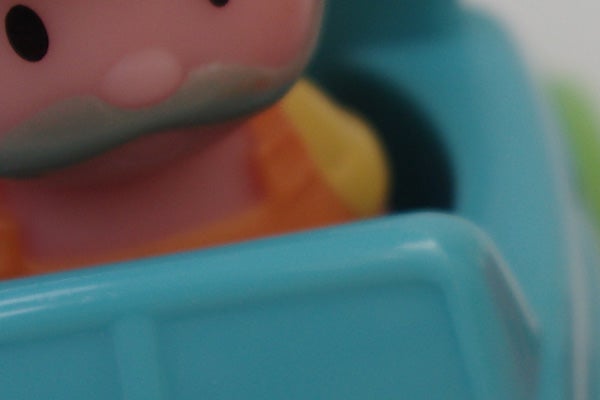
The same clear result is achieved at ISO200 – not exactly a stretch for an camera – with no discernible difference in appearance.
—-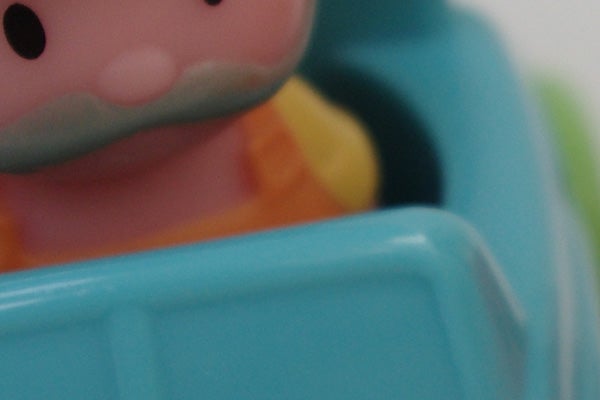
We’re at ISO400, usually the point at which some subtle image noise is creeping in, but if there is any here it’s very fine indeed.
—-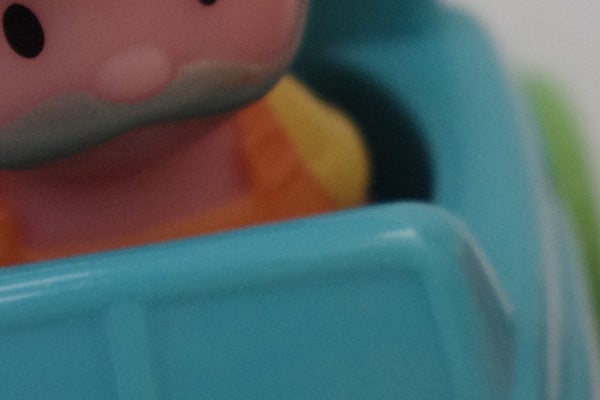
At ISO800 the image from the K-r is slightly more ‘sandy’ in appearance but only under very close scrutiny.
—-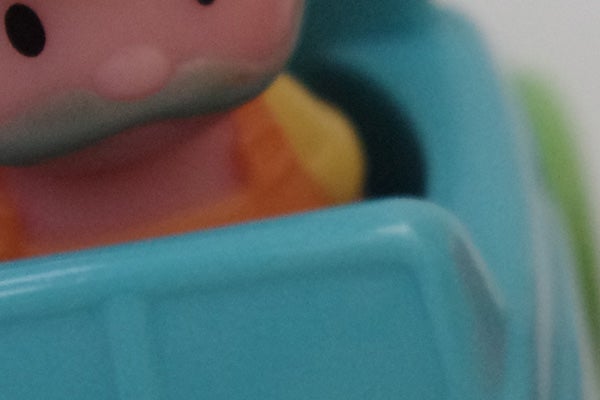
We’re at ISO1600, and detail is beginning to take on a slight more gritty appearance, with shadow detail breaking up a little.
—-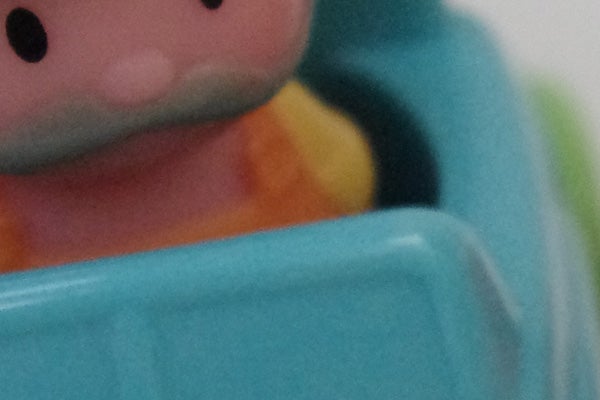
And similarly noise isn’t much ‘worse’ across the entire frame at the higher ISO3200 option. We’d certainly be happy continuing to shoot at this setting.
—-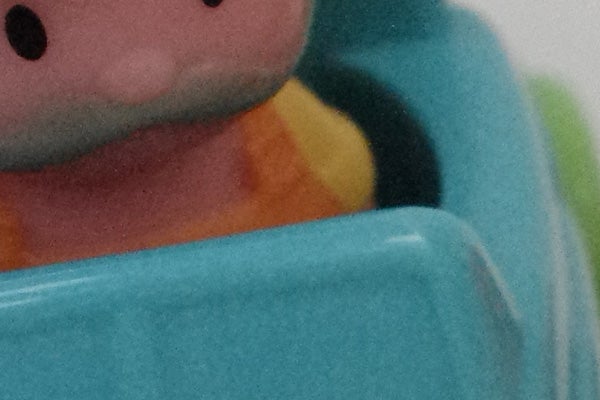
At ISO6400, even without enlarging any portion of the image grain is visible across it as a whole. But again, a usable option at a push, certainly.
—-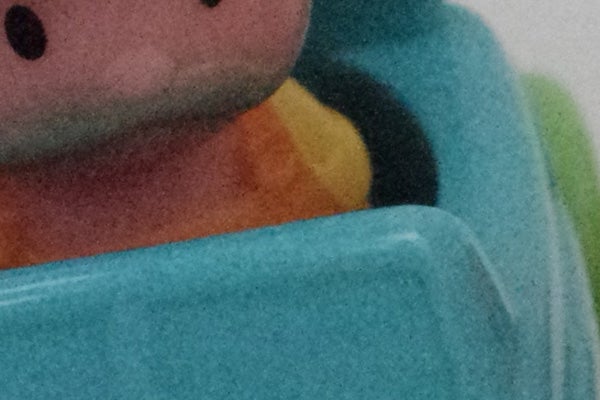
We’re at ISO12800 and the setting has prompted our toy cars to take on what can be described as a felt-like appearance – the result of both image noise and an overall softening of detail. Whilst the image cannot be described therefore as crisp, the textured effect is not altogether unpleasant however.
—-
As expected at ISO25600 noise levels at are at their most visually intrusive. One to reach for if it comes down to a straight choice between getting the shot or not, but certainly not one you’d be reaching for on a daily basis.
—-
”’A more general selection of test shots are revealed on this page and next to act as an evaluation of the Pentax K-r DSLR in a variety of shooting conditions with the 18-55mm zoom lens on test attached.”’
—-

An example of the level of detail delivered when shooting at maximum wide angle setting on the kit zoom. Sharp detail from front to back of frame, some lovely colours and an even exposure. Those who wish to nit pick will find some pixel fringing evident around the branches top of frame, but overall this is very good showing indeed.
—-

Zooming in from the same vantage point to show what the quality is like at the telephoto end of the same lens.
—-

Sharpness is maintained when shooting handheld at maximum telephoto setting. Again we have an even exposure and colours that, if slightly warmer than some, still fall on the side of naturalistic.
—-

Shot looking up at this imposing gate, detail is sufficient that one can pick out the peeling paint and areas of rusting. You really couldn’t hope for a much better performance from a kit zoom.
—-
”’A more general selection of test shots to act as an evaluation of the Pentax K-r DSLR in a variety of shooting conditions with the 18-55mm zoom lens on test attached.”’
—-

We were lucky enough to be graced with a spring-like day during our winter test period, prompting this dazzling display of colour ably reproduced by the Pentax in this close up shot that has not been cropped or altered in any way.
—-

This wide and low angle shot shows what can be achieved with the compositional aid of the K-r’s Live View function. Here, in terms of colour, we had switched to the ‘Reversal Film’ option in the Pentax’s Custom Image mode, adding a bit of additional punch and vibrancy.
—-

We left the camera on the same setting to bring out the colour pattern of the tiles on this driveway, contrasting with the blacks and whites of the dog’s fur to really bring our subject matter to the fore. And this is basically the kind of quality achievable merely by pointing and shooting with the K-r.
—-

And we’re back to the default option of ‘Natural’ mode selected from the Custom Image settings by way of contrast. This feels a little washed out in comparison and could benefit from brightness and contrast levels being adjusted in Photoshop to give it a bit more visual ‘bite’. But again, not a bad result at all.
—-
Trusted Score
Score in detail
-
Value 8
-
Image Quality 9
Features
| Camera type | Digital SLR |
| Optical Zoom (Times) | 12 Xx, 3 Xx |
| Image Sensor | CMOS |
| Image Stabilisation | Optical, Sensor Shift |
| LCD Monitor | 3 in |
| Flash modes | Auto Flash, Flash OFF, Flash ON, Red-eye Reduction, Slow Sync, Accessory Shoe, Built-in Flash |
| Video (max res/format) | 640 x 480, 1280 x 720 |
Physical Specifications
| Dimensions Width (Millimeter) | 125mm |
| Depth (Millimeter) | 68mm |
| Length (Millimeter) | 97mm |
| Weight (body only) (Kilogram) | 598kg |

